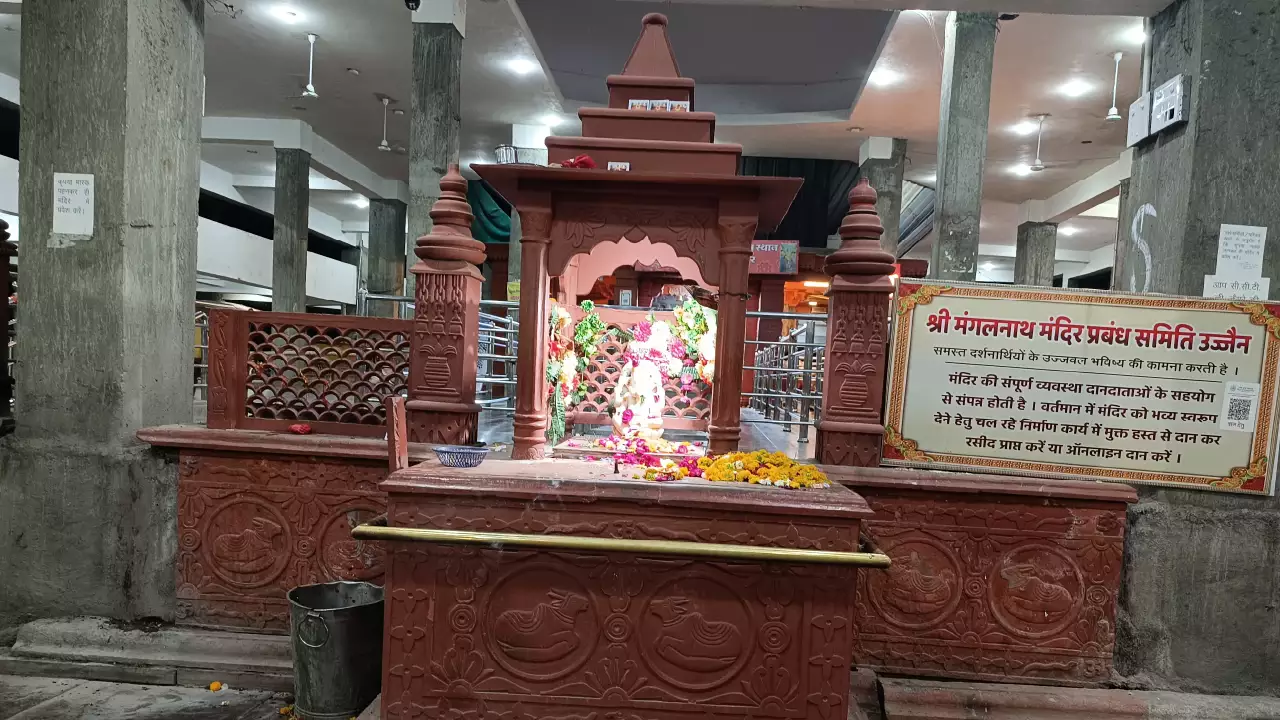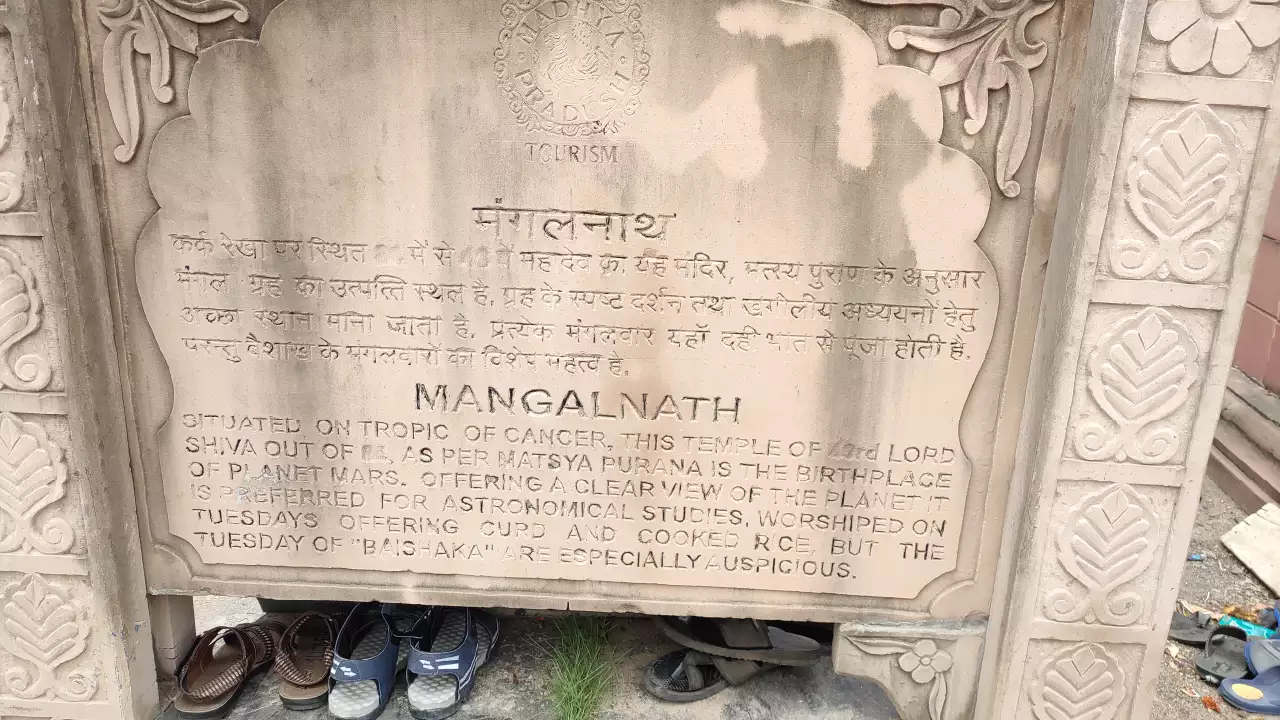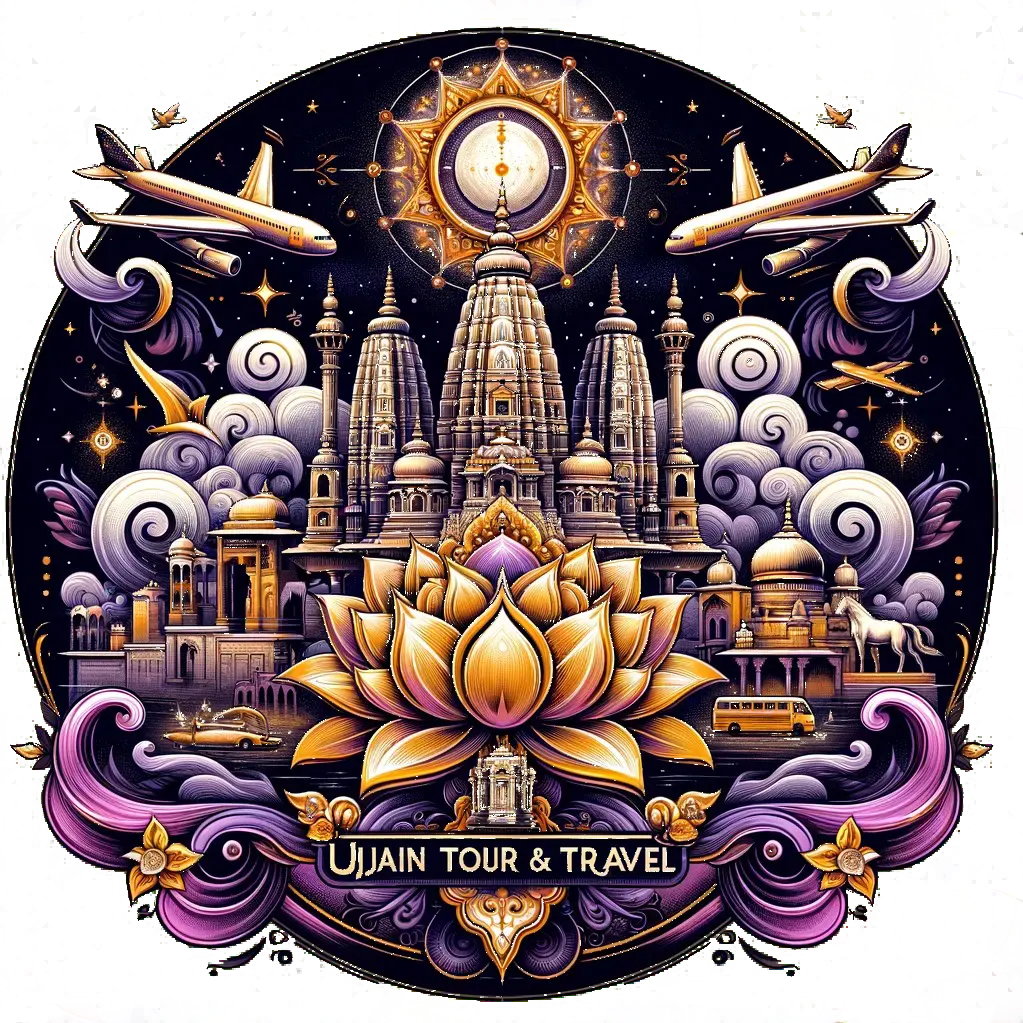
History and Significance
Mangal Nath Temple, dedicated to Lord Shiva, the embodiment of cosmic consciousness and destroyer of negativity, is believed to be one of the oldest temples in Ujjain. Standing tall as a testament to the city's rich spiritual heritage, the temple's origins are shrouded in the mists of time. Historical accounts suggest its existence as early as the 5th century CE. References to the temple can be found in ancient texts like the Skanda Purana, a Hindu scripture that details various pilgrimage sites.
The architectural style of Mangal Nath Temple reflects a blend of ancient and medieval influences. The sanctum sanctorum, the innermost sanctum, houses the self-manifested (Swayambhu) lingam of Lord Shiva, a naturally occurring black stone revered for its immense power. The outer walls and mandapas (halls) showcase later additions, featuring intricately carved pillars and sculptures depicting various Hindu deities and mythological scenes. The towering shikhara (spire) adds to the temple's grandeur, symbolizing Lord Shiva's connection to the infinite.

Importance:
Mangal Nath Temple holds immense significance for devotees seeking auspicious beginnings, overcoming challenges, and achieving peace and prosperity. Lord Shiva, revered as the destroyer of negativity and the transformer, is believed to remove obstacles and pave the way for success in one's endeavors. Worshipping Lord Shiva at this ancient temple is believed to bring good luck, especially for undertakings commenced on Mondays, considered an auspicious day dedicated to Shiva. Additionally, the Shravan month in the Hindu calendar holds immense significance for Shiva devotees. During this holy month, pilgrims throng the temple to perform special pujas, abhishek (sacred bathing of the idol), and observe fasts to seek blessings from Lord Shiva.
Legends And Festivals:
Legends associated with Mangal Nath Temple add to its mystique. One popular narrative recounts the story of King Vikramaditya, a legendary Indian emperor renowned for his valor and wisdom. Vikramaditya, a devout worshipper of Lord Shiva, is said to have sought blessings from this very temple before embarking on his conquests. Another legend narrates the tale of a wealthy merchant who, despite his immense riches, remained childless. He prayed fervently at Mangal Nath Temple, and his prayers were eventually answered with the birth of a son. These stories highlight the temple's enduring association with prosperity and the fulfillment of desires.
The temple comes alive during various Hindu festivals throughout the year. Shivaratri, the night of Shiva, is a particularly grand celebration marked by special pujas, all-night chanting of hymns, and throngs of devotees seeking Shiva's blessings. Another noteworthy festival is Maha Shivratri, celebrated during the Shravan month. Devotees observe fasts, perform elaborate abhishek rituals with milk, and participate in processions that snake through the city streets.
Daily Rituals and Aarti :
The temple follows a structured daily routine of pujas and aarti ceremonies. The Mangal Aarti (auspicious morning prayer) is performed at sunrise, followed by other pujas like Shringar Aarti (offering of adornments) and Madhyana Aarti (midday prayer). The Bhasma Aarti (evening aarti), a unique offering, involves coating the Shiva lingam with sacred ash. Devotees can participate in these aarti ceremonies and witness the mesmerizing rituals associated with Shiva worship.
Offerings and Dress Code :
Devotees typically offer Bilva leaves (considered sacred in Shiva worship), flowers, fruits, and Gangajal (holy water from the Ganges River) to Lord Shiva. While there is no strict dress code, modest clothing is recommended for visiting the temple.
Timings :
The temple remains open from sunrise (around 6:00 AM) to sunset (around 9:00 PM). However, specific timings for specific pujas and aarti ceremonies might vary. It's advisable to check with the temple authorities beforehand or visit the temple's website for the latest timings.
